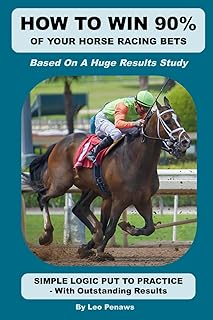Takeout rates in horse racing have long been a topic of discussion, with comparisons to sports betting odds shedding light on the challenges faced by the industry. While a 15% takeout rate is considered low, the standard rate hovers around 17%. This seemingly modest percentage can significantly impact wagering outcomes, especially in races where a few horses dominate the betting pool.
For instance, a recent race at Pocono Downs saw two horses, Twin B Joe Fresh and Sylvia Hanover, heavily favored at odds-on prices. In a field of eight, the odds on these horses reflected a scenario akin to sports odds of -110. Such situations raise questions about the fairness and value proposition for bettors, particularly when faced with limited betting options.
Smaller fields exacerbate the issue, as demonstrated in a race at The Meadowlands featuring only four horses. In this case, the odds on the top contenders, Niki Hill and Treacherous Dragon, suggested a lopsided competition that would deter most sports bettors. These examples underscore the impact of takeout rates on the perception of fairness and the sustainability of wagering in horse racing.
While larger field sizes may mitigate some concerns about takeout rates, the fundamental issue remains unchanged. The historical continuity of these rates over the past six decades highlights a lack of evolution in response to industry trends and competition. Despite advancements in sports betting and other forms of gambling, horse racing has lagged behind in addressing the disparity in takeout rates.
Efforts to lower takeout rates, as advocated by industry experts, hold the promise of revitalizing wagering activity and enhancing competitiveness. Red Mile’s initiative to offer wagers with industry-low takeout rates sets a positive precedent for the industry, signaling a shift towards aligning horse racing with contemporary gambling standards. By reducing takeout rates and diversifying wagering options, the industry can enhance its appeal to a broader audience and remain competitive in the evolving landscape of sports betting.
In conclusion, the scrutiny of takeout rates in horse racing underscores the need for reform and adaptation to meet the expectations of modern bettors. As the industry grapples with challenges posed by high takeout rates, strategic interventions aimed at increasing handle and improving wagering experiences are essential for its long-term sustainability and relevance in the gambling market.
📰 Related Articles
- Horse Racing Reform: Hisa’s Impact on US Industry Integrity
- Horse Racing Industry Faces Concern Over Proposed Gambling Tax Hike
- Western Australia’s Racing Industry Transformed with Pinnacles Series Success
- Wednesday’s Horse Racing: Thrilling Action at Sandown, Canterbury, Doomben
- Wayne Yole Faces Inquiry Over Horse Racing Stables Allegations






